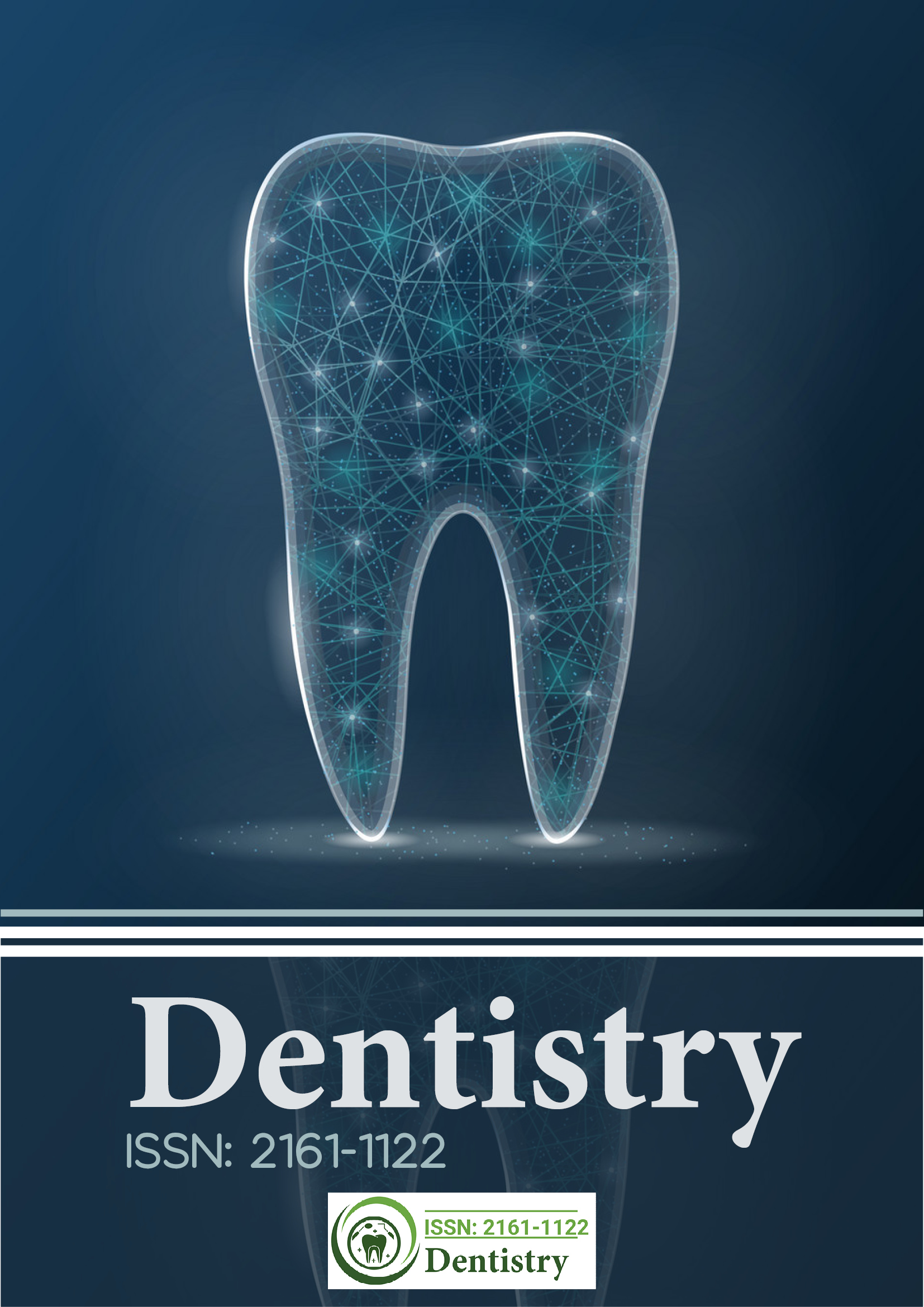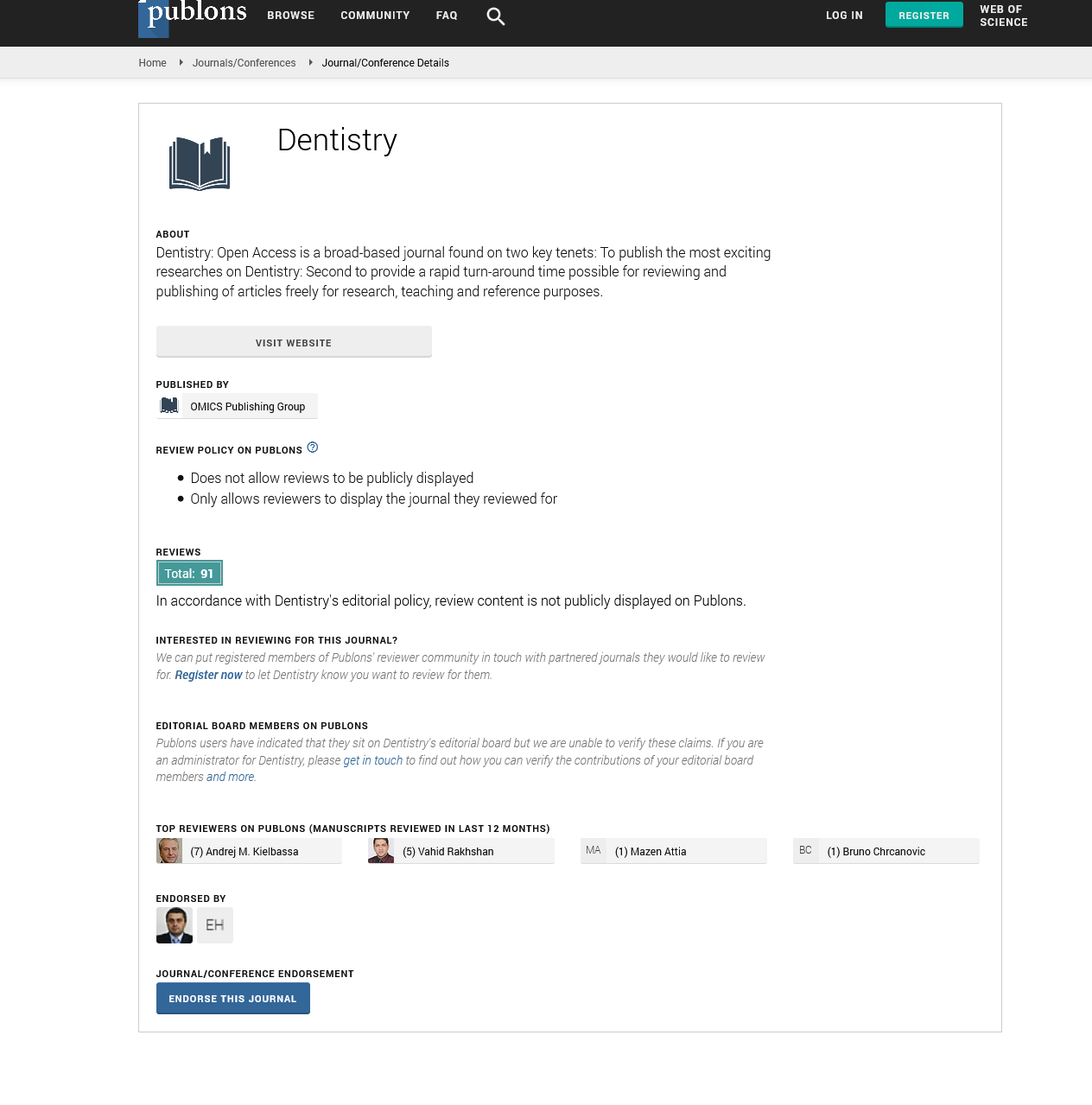Citations : 2345
Dentistry received 2345 citations as per Google Scholar report
Indexed In
- Genamics JournalSeek
- JournalTOCs
- CiteFactor
- Ulrich's Periodicals Directory
- RefSeek
- Hamdard University
- EBSCO A-Z
- Directory of Abstract Indexing for Journals
- OCLC- WorldCat
- Publons
- Geneva Foundation for Medical Education and Research
- Euro Pub
- Google Scholar
Useful Links
Share This Page
Journal Flyer

Open Access Journals
- Agri and Aquaculture
- Biochemistry
- Bioinformatics & Systems Biology
- Business & Management
- Chemistry
- Clinical Sciences
- Engineering
- Food & Nutrition
- General Science
- Genetics & Molecular Biology
- Immunology & Microbiology
- Medical Sciences
- Neuroscience & Psychology
- Nursing & Health Care
- Pharmaceutical Sciences
Total mandibular reconstruction with total custom titanium prosthesis in segmented micro vascular fibula
3rd International Conference on Advanced Dental Education
November 15-16, 2018 | Edinburgh, Scotland
Wagner Breit
Maxillo Facial Surgeon in Brazilian Army, Brazil
Scientific Tracks Abstracts: Dentistry
Abstract:
The objective of this work is to show a new surgical protocol in high complexity reconstructions in the mandibular skeleton, predicting more stable results and a greater chance of rehabilitation with integrable bone implants. This surgical case is the first case in the world. Until then, we only have cases of the most varied types of mandibular reconstructions, either microvascularized, or autogenous grafts isolated or with plaques of reconstruction, not guaranteeing a stable long-term result for the patient mutilated by extensive segmentations caused by benign or malignant oral pathology. Therefore, in this particular case, it shows a case of a patient with extensive ameloblastoma, who in a first surgical phase, was performed full mandibulectomy with a wide margin of safety and microvascular fibular graft with green-breasted fibular segmentation, grafted bone graft interposition bioss, rhBMP-2 and osteosynthesis with miniplates and 2.0 screws. After a few months after surgery, the appearance of the microvascular fibular graft was morphologically in poor position, with vertical height exaggerated due to the high degree of angulation of the fibula, fibrosis in the stumps grafted with, bone instability to withstand chewing forces for future rehabilitation with osseointegrated implants. Therefore, a new surgery, with extra-oral access, segmentation of the fibular graft in specific areas and studied in virtual planning and manufacture of the total mandibular prosthesis in custom titanium, with height and mandibular shape, thicknesses at strategic locations as a zone of traction and compression, as well as to predict the exact locations for placement of the implants and their complete rehabilitation. In literature so far, there are no such extreme cases available only cases of mandibular hemi-prosthesis are available. In this case, it is necessary to discuss the technique, virtual evaluation and imaging, in order to promote a rehabilitative surgery with extreme stability, predictability and establish normal functionality to the patient. Recent Publications 1. Markiewicz M R and Bell R B (2011) The use of 3D imaging tools in facial plastic surgery. Facial Plast Surg Clin North Am 19(4):655-682, ix. 2. Haddock N T, Monaco C, Weimer K A, Hirsch D L, Levine J P and Saadeh P B (2012) Increasing bony contact and overlap with computer-designed offset cuts in free fibula mandible reconstruction. J. Craniofac Surg. 23(6):1592-1595. 3. Essig H, Rana M, Kokemueller H, et al. (2011) Pre-operative planning workflow resulting in a patient specific reconstruction. Head Neck Oncol. 3:45. 4. Wilde F, Plain M, Riese C, Schramm A and Winter K (2012) Mandible reconstruction with patient-specific pre-bent reconstruction plates: comparison of a transfer key method to the standard method-results of an in vitro study. Int J CARS 7(1):57-63. 5. Hidalgo D A (1989) Titanium miniplate fixation in free flap mandible reconstruction. 23(6):498-507.
Biography :
Wagner Briet is one of the most familiar Specialists in Temporomandibular Joint and Surgery of Facial Deformities.
E-mail: wbwagner@hotmail.com

